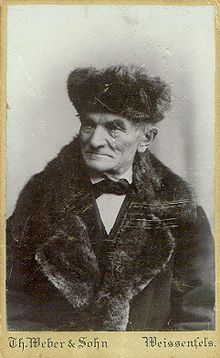F. Ladegast
| Founded/Born - Closed/Death | 1818 - 1905 |
|---|---|
| Still active? | no |
Friedrich Ladegast (1818-1905) was a prominent German organ builder in the late 19th century. Born in Hochhermsdorf, Saxony, he was one of twelve children. His family was not traditionally musical, but Ladegast received piano and organ lessons, developing a deep interest in music. He trained as an organ builder in his brother's workshop and worked in various workshops across Germany. His studies included travels to Alsace, Southern Germany, and France, where he admired the works of Gottfried Silbermann and Aristide Cavaillé-Coll.
In 1847, Ladegast established his own workshop in Weißenfels, aided by favorable economic conditions and connections with influential musicians. His breakthrough came in 1849 with an organ for St. George's Church in Geusa, followed by a significant project for the Merseburg Cathedral in 1853. The Merseburg organ, completed in 1855, was the largest in Germany at the time and brought Ladegast widespread acclaim.
Ladegast's success continued with numerous prestigious commissions, including the large organ for Leipzig's Nikolaikirche and the Schwerin Cathedral, which featured innovative technologies such as the Barkermaschine and pneumatic crescendo. His workshop in Weißenfels expanded to accommodate these large projects, incorporating both traditional and modern techniques.
Despite his success, Ladegast faced increasing competition from industrialized organ builders. His preference for traditional craftsmanship and sound eventually made it difficult to compete with firms that embraced newer technologies like the pneumatic action. Ladegast trained many apprentices who became notable organ builders themselves.
After the death of his wife in 1892, Ladegast gradually withdrew from public life, handing over his workshop to his son Oskar in 1898. He died in 1905, and his contributions to organ building were widely respected, with his organs celebrated for their technical and tonal qualities. Albert Schweitzer regarded him as the greatest organ builder after Silbermann, continuing his tradition while surpassing even Cavaillé-Coll in tonal beauty.
In 1847, Ladegast established his own workshop in Weißenfels, aided by favorable economic conditions and connections with influential musicians. His breakthrough came in 1849 with an organ for St. George's Church in Geusa, followed by a significant project for the Merseburg Cathedral in 1853. The Merseburg organ, completed in 1855, was the largest in Germany at the time and brought Ladegast widespread acclaim.
Ladegast's success continued with numerous prestigious commissions, including the large organ for Leipzig's Nikolaikirche and the Schwerin Cathedral, which featured innovative technologies such as the Barkermaschine and pneumatic crescendo. His workshop in Weißenfels expanded to accommodate these large projects, incorporating both traditional and modern techniques.
Despite his success, Ladegast faced increasing competition from industrialized organ builders. His preference for traditional craftsmanship and sound eventually made it difficult to compete with firms that embraced newer technologies like the pneumatic action. Ladegast trained many apprentices who became notable organ builders themselves.
After the death of his wife in 1892, Ladegast gradually withdrew from public life, handing over his workshop to his son Oskar in 1898. He died in 1905, and his contributions to organ building were widely respected, with his organs celebrated for their technical and tonal qualities. Albert Schweitzer regarded him as the greatest organ builder after Silbermann, continuing his tradition while surpassing even Cavaillé-Coll in tonal beauty.
No YouTube videos available.
Make this Notebook Trusted to load map: File -> Trust Notebook
https://de.wikipedia.org/wiki/Friedrich_Ladegast
 Pipe Organ Map
Pipe Organ Map